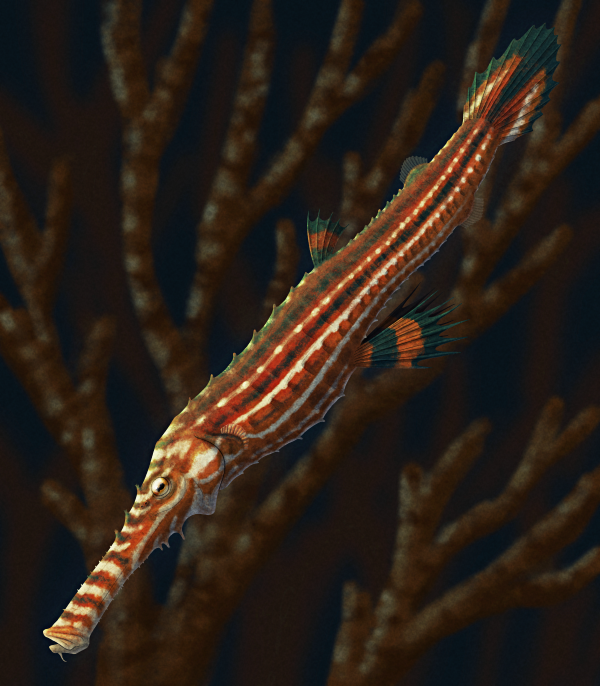Ghost pipefishes are close relatives of pipefish and seahorses, and today are represented by six different species found in shallow tropical waters of the Indo-Pacific. But while this lineage is estimated to have originated around 70 million years ago in the Late Cretaceous, their fossil record is very sparse – only three fossil representatives are currently known from the entire Cenozoic.
Calamostoma lesiniforme is one of the oldest of these, dating to the early Eocene around 50-48 million years ago. Known from the Monte Bolca fossil beds in northern Italy, it lived in a warm shallow reef environment during a time when that region of Europe was covered by the western Tethys Ocean.
Up to about 9cm long (3.5″), it was already very similar in appearance to modern ghost pipefishes, with a long tubular snout, star-shaped bony plates in its skin, two dorsal fins, and fairly large pelvic fins that formed an egg-brooding pouch in females. It probably had the same sort of lifestyle as its modern relatives, floating pointing downwards and camouflaging itself among seagrasses, algae, and corals.
One specimen preserves a small amount of color patterning, showing hints of dark banding on the pelvic and tail fins. But since modern ghost pipefish can change their coloration to better mimic their surroundings, it’s unclear whether these markings were common to all Calamostoma or were just part of this particular individual’s camouflage.

